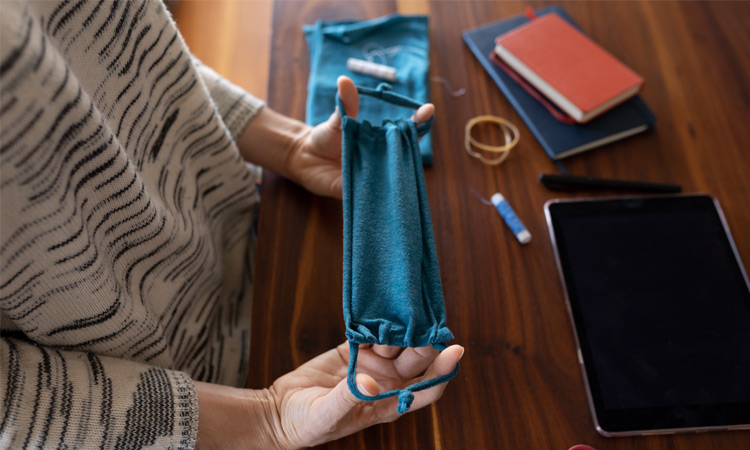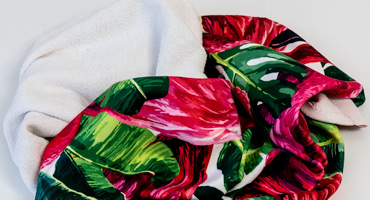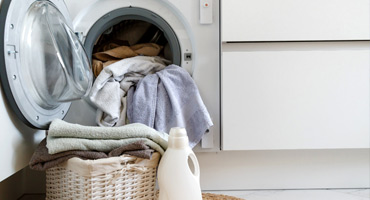When choosing the right material for protective masks, we are primarily guided by the tightness of the weave, because it is of key importance. The fabric weave must be tight enough (you can read about the types of fabric weaves in this article - popular fabric weaves) that the outline of individual fibers cannot be seen when the material is held up to the light. Tightly woven 100% cotton is superior to most synthetic materials. This may be due to the fact that synthetic fibers are relatively smooth at a microscopic level, whereas cotton fibers have a slightly three-dimensional structure that likely creates additional barriers to both outgoing and incoming particles.

What should you pay attention to when choosing a protective mask?
To do its job well, a mask should fit perfectly to the contours of your face, and have the right shape. A good, snug fit depends on the construction of the mask itself. Make sure that the mask does not have gaps at the edges that could allow particles to enter/escape. Knitted fabrics have some stretch and can be used to make masks that fit snugly to your face without causing discomfort. A well-fitted mask will hug your face, covering your nose and chin without visible gaps. Masks with a flexible metal nose band can help create a tight seal and keep the mask in place; this can also help prevent glasses from fogging.

What should you remember?
– Wearing face masks is intended to reduce the risk of infecting others by reducing the speed of saliva particles.
– Avoid touching the mask while wearing it.
– To remove the face mask, do not touch the front of the mask, but untie it from the back.
- Face masks are not intended to be worn 24/7. Replace the mask with a clean, dry mask as soon as it becomes damp, at least once a day, or more often if used for long periods of time. When a mask becomes damp, it loses its protective properties and can cause a capillary effect, which causes particles to be transferred through the materials along with moisture.
– The mask should be washed after each use to avoid other contamination through contact.
– Before and after removing the mask, or any time you touch the mask, wash your hands with soap and water or an alcohol-based hand sanitizer.
Precautions during the pandemic
It is recommended that face masks be worn in public places, especially around strangers when other social distancing measures are difficult to maintain. Face masks made of at least 2 layers of material are most likely to reduce the spread of COVID-19 when widely used by people in public places. Simple face masks can be made at home using washable, breathable material and can help prevent the spread of COVID-19.






